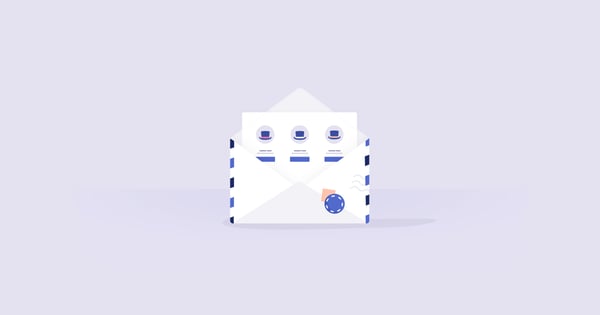If you get lost in an unfamiliar place, chances are you’ll look to signposts to help you find your way. E-commerce shoppers are the same: if they’re looking through your store, thinking about buying something, they might need a little guidance on where to look.
One way to nudge prospects in the right direction is by using well-timed, relevant product recommendations in your email marketing campaigns.
Recommendations in emails are known to increase their click-through-rate by 300% or more and are a reliable way to increase traffic to your e-commerce store and boost your average order value.
That said, here are nine real-life examples of effective ways you can use product recommendations across your email marketing strategy. You’ll discover the different types of recommendations, along with some actionable ways to get the most out of them.

Table of Contents
1. The Welcome Email
Your welcome email is one of the first impressions that your subscribers get of your brand, so it’s worth spending time on perfecting.
Luckily, if they’ve subscribed to your email list, it’s likely that they’re already excited about you and your products, which gives you a head start on encouraging them to take the plunge and make a purchase.
You can give them the first nudge in the buying process by placing some product recommendations in your welcome email.
Barnes & Noble is a great example:
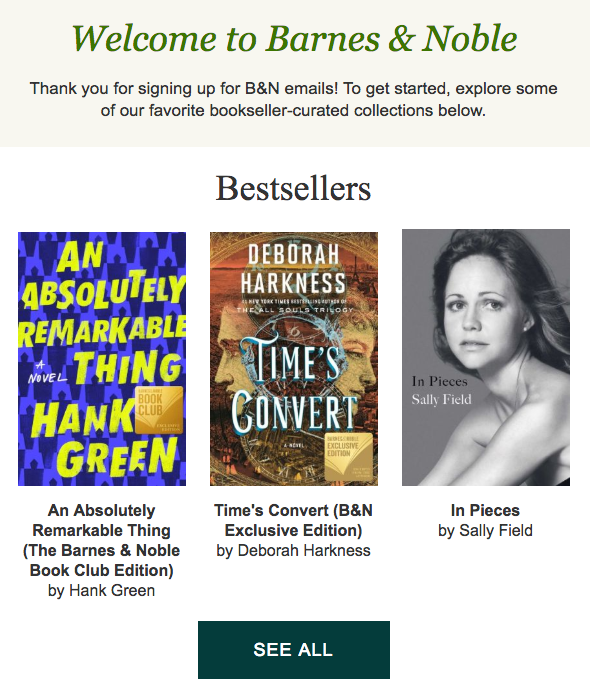
I don’t know about you, but finding books that I want to read is a near-impossible task. The variety out there is just so overwhelming that I have no idea what I would like, or where to start.
Thankfully, Barnes & Noble understands this problem. From the get-go, they introduce their subscribers to the world of books with plenty of recommendations. To avoid overwhelming the reader, they divide the books into several categories, including bestsellers and a few different genres.
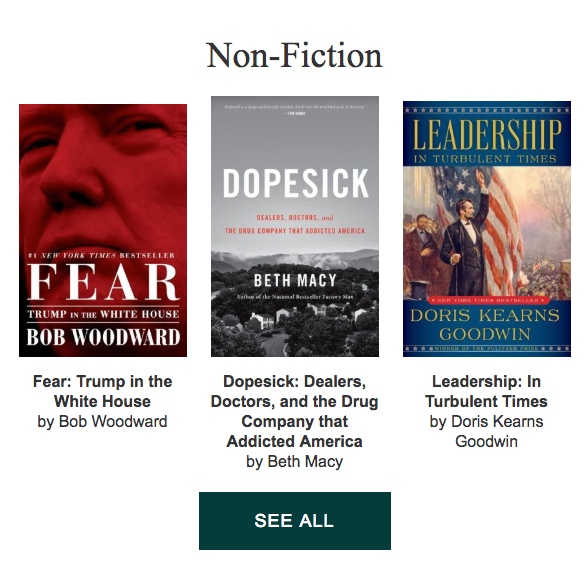
Now, instead of overwhelmed, I feel inspired to try out some different book options. What’s even better is Barnes & Noble assure me that these lists have been “bookseller-curated,” so I know I can trust their recommendations to be worthwhile.
This is a great use of authority in product recommendations—an expert seal of approval makes your prospects more likely to take your advice.
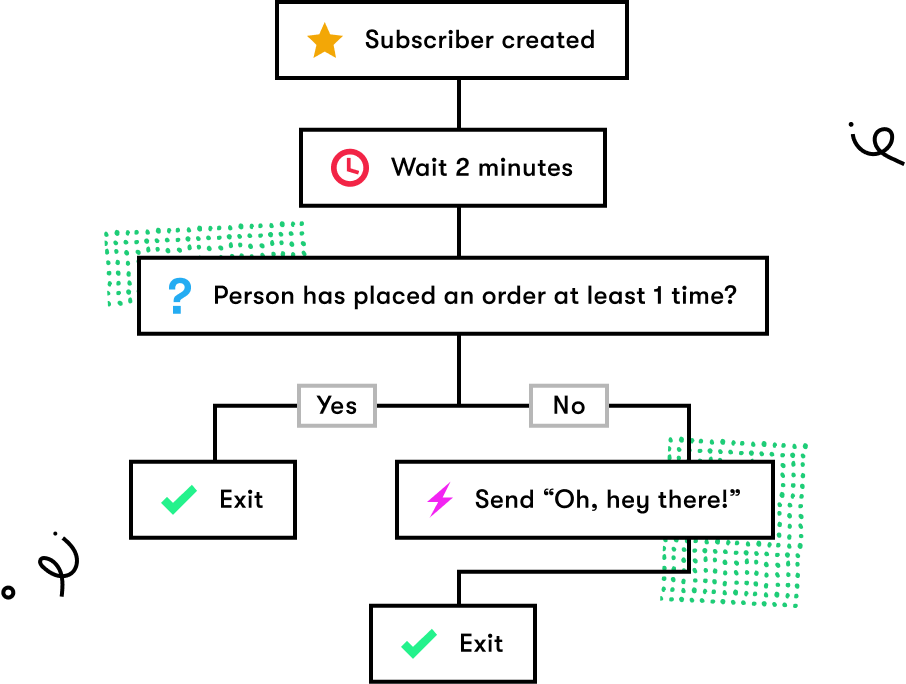

2. The Promotional Email
Promotional emails are the backbone of your email marketing strategy, so it’s no wonder when over 50 percent of shoppers say that they make purchases from marketing emails at least once a month.
Adding product recommendations to these emails can be a great way to increase your conversion rate even further. Beauty Bay knows this well and adds a short recommendations section to every promotion they send out.
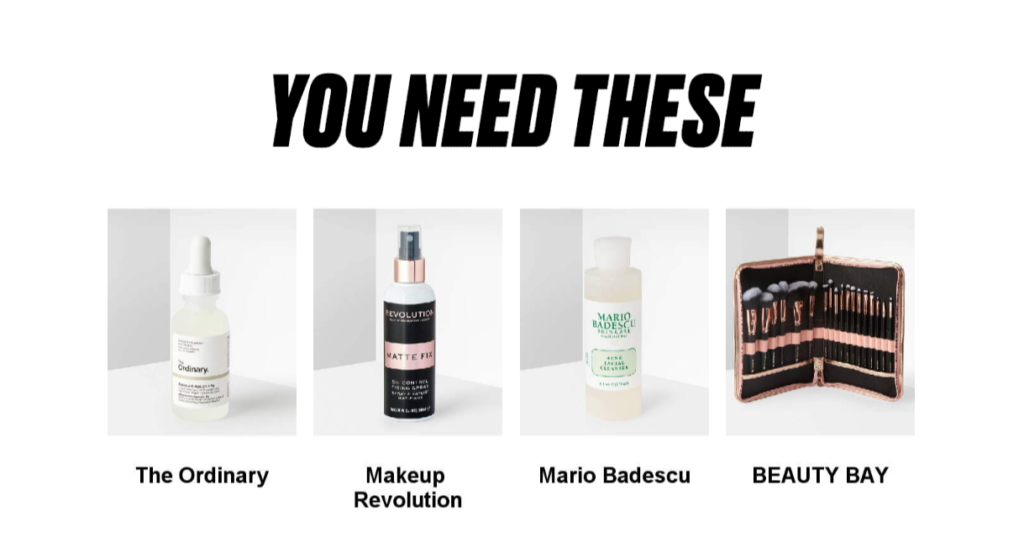
Unlike Barnes & Noble’s recommendations, these are personalized to each recipient, based on their previous browsing history. If you click on any of the products, you’re taken immediately to the product page.
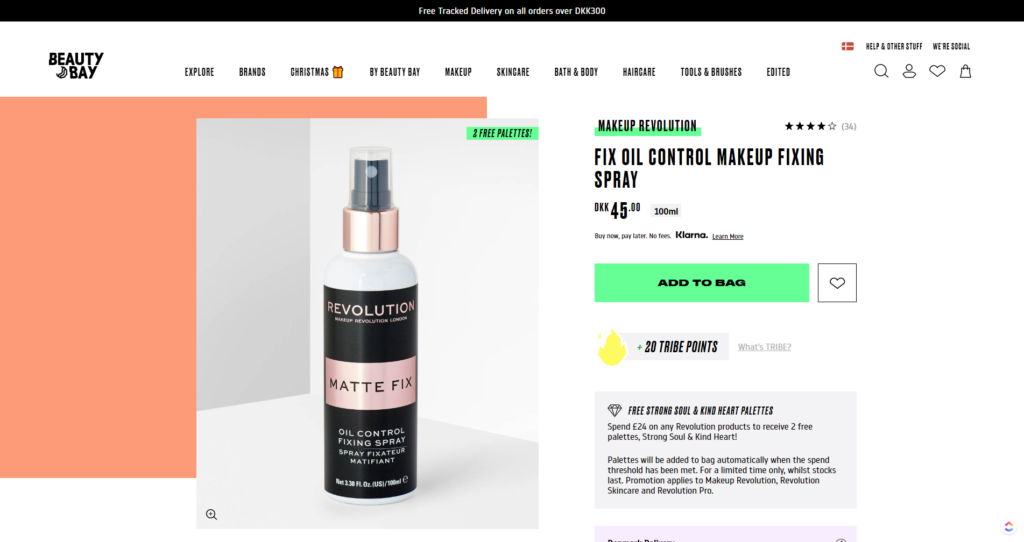
Now all I have to do is add it to my bag and, just like that, I’ve bought the fixing spray. After all, the quicker and easier it is to make a purchase, the more likely I am to take action.
By going the extra mile and generating a personalized list of products the person has already been thinking about, Beauty Bay increase the chances of prospects making a purchase.
Takeaway
There are many ways out there to create personalized recommendations for your customers, including the recommendation engine Clerk. Their recommendations are dynamic and are based on behaviors like browsing- or click-history.
3. The Abandoned Cart Email
Ah, the abandoned cart email: another mainstay of any self-respecting email marketing strategy. In fact, for every angle that you can think of to encourage people back to your checkout flow, chances are that there’s a brand already using it.
The cosmetics brand Tarte does something interesting with their abandoned cart emails. In them, they cleverly offer alternative products alongside those the buyer initially added to their cart.
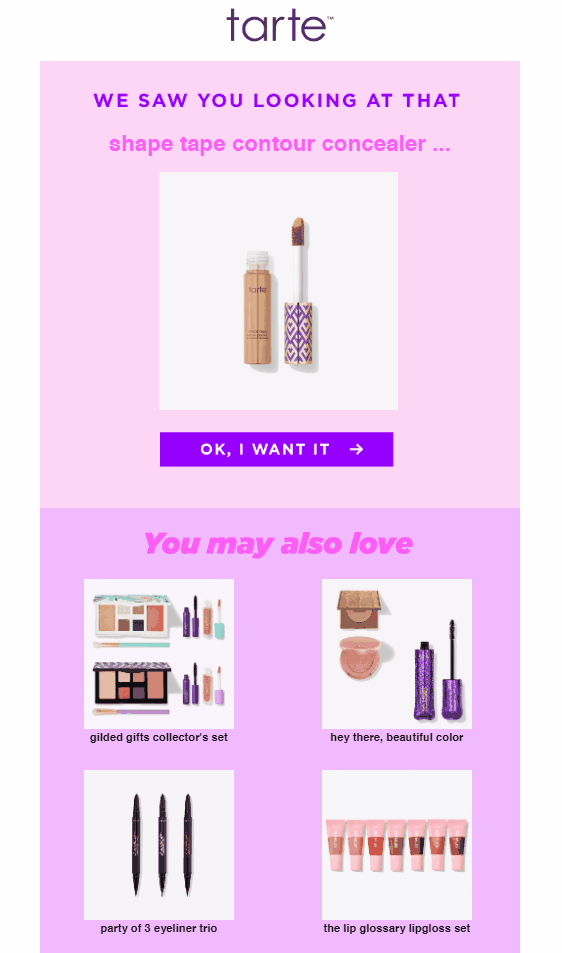
If people abandoned their carts on your site, it may be because they couldn’t find what they were looking for. By adding a few recommendations to your email, you can provide some similar alternatives that they might not have noticed the first time around—and that might just be enough to entice them back to the checkout.
I like the layout Tarte has chosen for this email because it doesn’t steal the spotlight away from the product I was originally looking at. The flashing call-to-action (CTA) is the biggest attention-grabber, but if I’m interested, I can scroll down and see their recommendations right below.
This may just be what your prospect needs to sway their decision and return to their cart.
4. The Seasonal Email
Around the holidays, everyone faces the same struggle. You’ve got a lot of people to buy gifts for and few ideas what to get.
In recent years, gift guides have become an incredibly popular way for e-commerce brands to recommend products and boost their seasonal sales. They make it quick and easy for customers to find interesting and relevant gifts for their loved ones, erasing the frustration of trawling through websites for hours on end.
I like this example from L’Occitane. It’s simple, showcasing a few collections of their best products, along with some catchy titles that let you know the benefits of each.
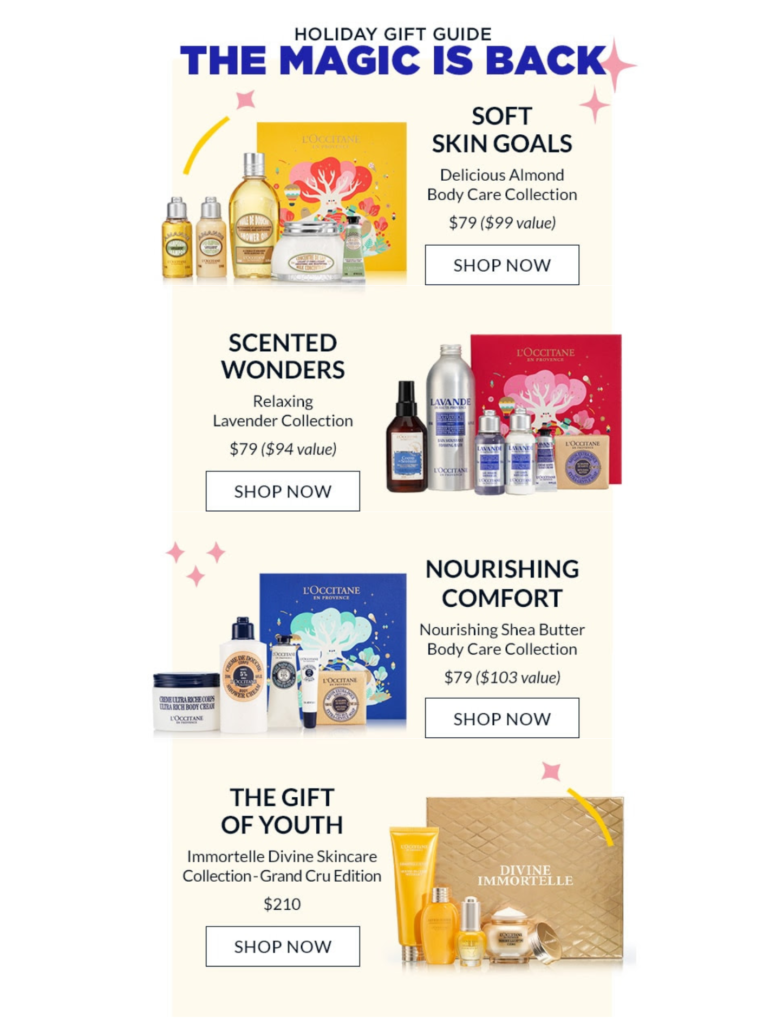
The number of options they offer isn’t overwhelming; it just provides a convenient starting point in your gift search. If subscribers are intrigued by these ideas, they can click through to the website to find further information and more gift inspiration.
In your holiday emails, you could sort your recommendations by category, price, or recipient and even link to a dedicated landing page on your site with more options to choose from.
5. The Order Confirmation Email
Now that we’ve discussed what happens when people don’t know what to buy, let’s move on to what can happen when they do. They place an order with you!
Order confirmation emails are eight times more likely to be opened than regular marketing emails, and those who receive them are more likely to become fans of your brand and your products. This makes them an ideal place for cross-selling products.
Zalando’s order confirmation emails are a great example of effective cross-selling. Once you buy an item of clothing, they provide a compelling call-to-action alongside it, inviting you to “Complete the look”:
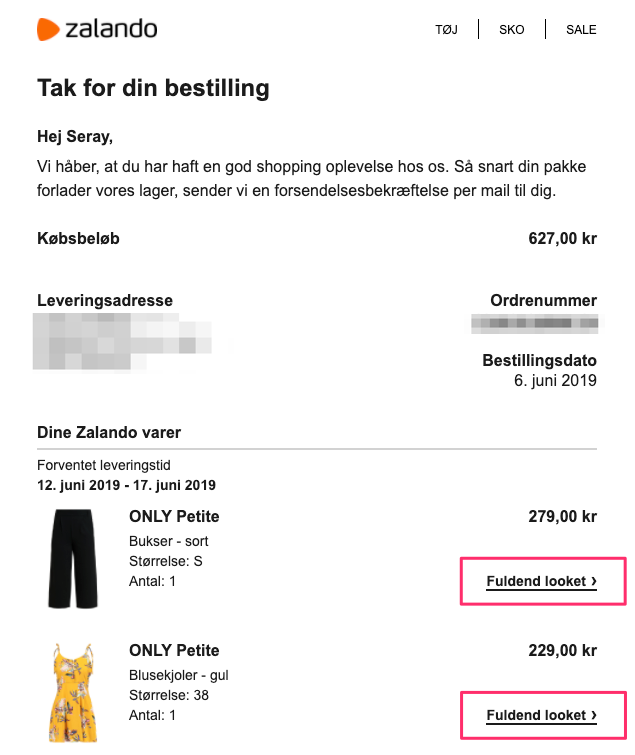
If you click the link in the email, Zalando take you to a landing page of items “you might also like”:
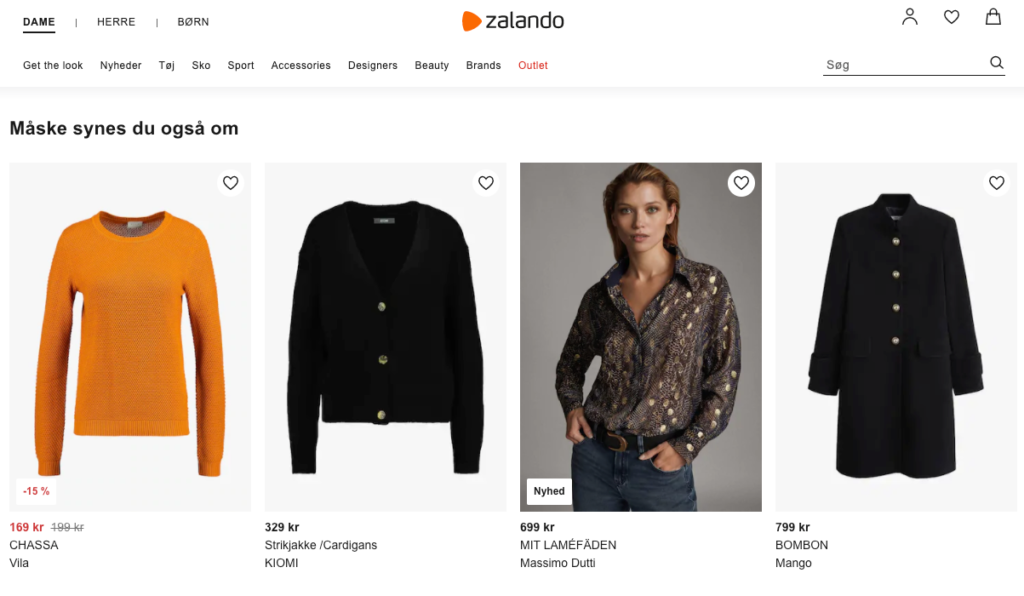
And, just like that, Zalando has increased its average order value.
Importantly, these products genuinely complement the original item in the order. If you want to preserve your customer experience, you must help your customers, not annoy them with irrelevant suggestions.
Recommendations like this work especially well in the apparel sector because everyone loves a well-put-together outfit, but you can easily adapt this idea to all kinds of e-commerce niches.
6. The Loyalty Program Email
Customer loyalty programs are a tried-and-tested way of incentivizing customers to buy from you again and again. The built-in gamification of a rewards scheme is a solid motivating factor to keep people interested in your products.
Many loyalty program emails are great at showing your progress towards your next goal and what you can get when you reach it, but ASOS’s A-List program email went a step further by adding product recommendations.
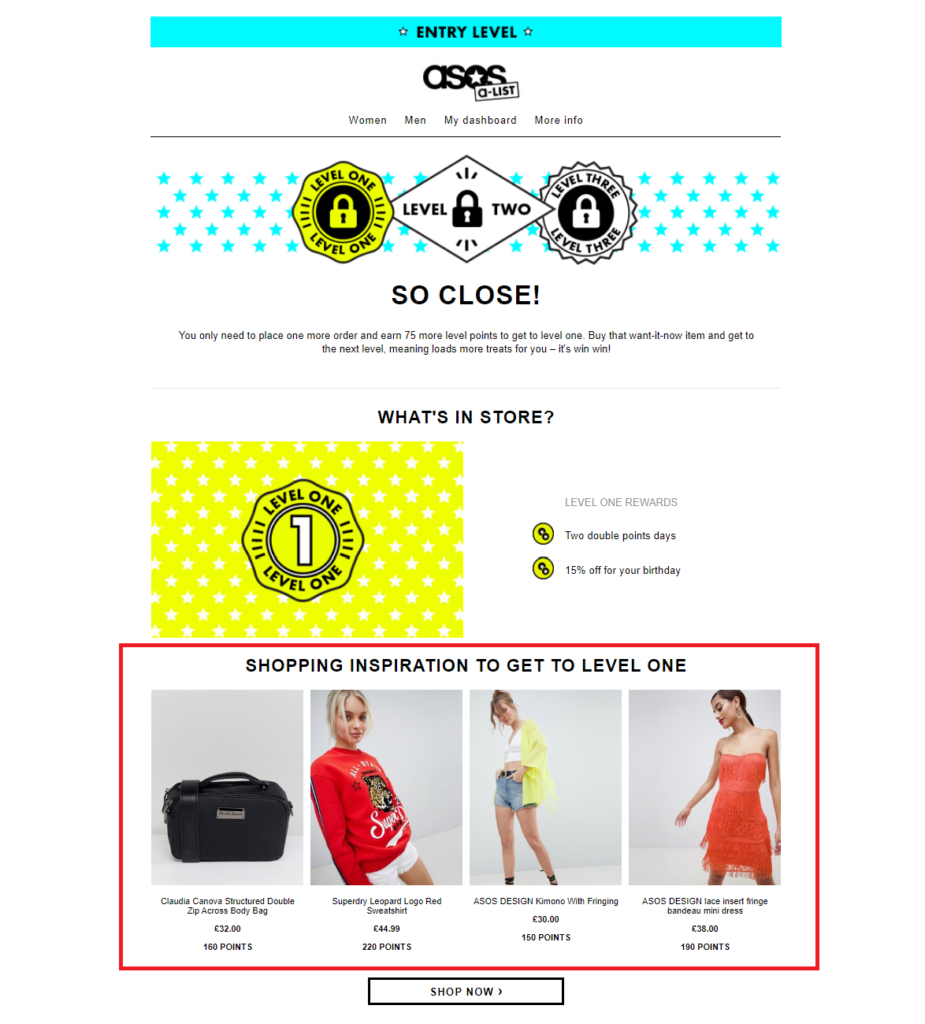
By framing their recommendations as inspiration, they keep their subscribers enthusiastic about buying more from them to reach the next tier in the program. They also include the number of points each item is worth, so they know what they can buy to get there.
There’s an opportunity in emails like this to get personalized with your recommendations. You could try recommending several products that are worth the exact amount of money. Or, the number of points that each customer would need to achieve the next reward or tier, making it an enticing offer to make a purchase.
7. The Customer Appreciation Email
Once you’ve converted a subscriber into a loyal customer, it’s time to say thank you. After all, it’s only polite to appreciate your customers for getting you to where you are today.
There are many reasons to send an appreciative email, including:
- When someone is a high-value customer or a new subscriber;
- When someone shares feedback with you; or
- To celebrate a customer’s birthday or anniversary.
For a good example to model, check out this email from home-furnishing retailer Chairish:
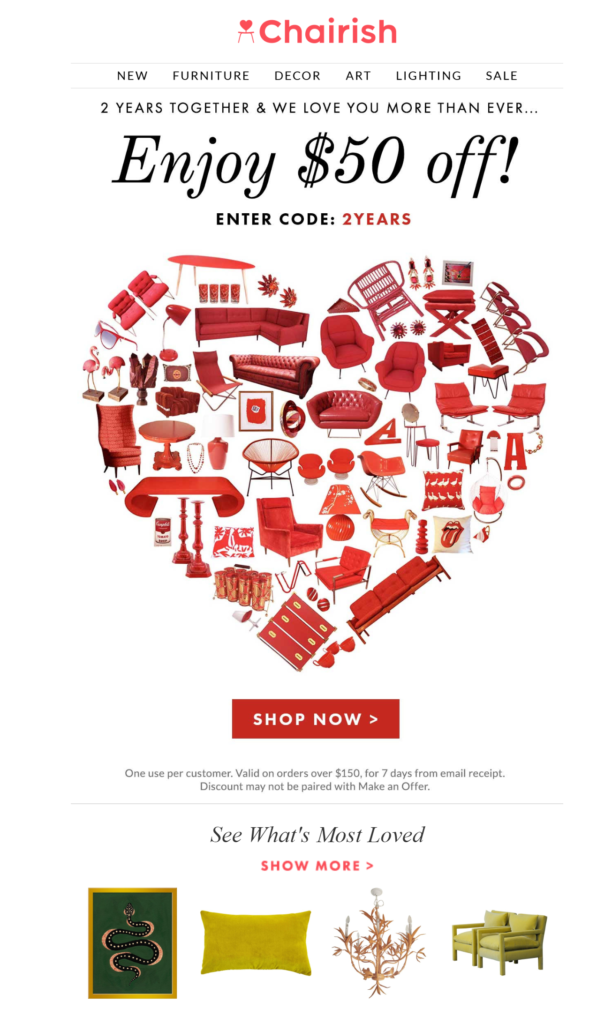
As a thank you to their loyal subscribers, they offer a pretty generous discount on the subscriber’s signup anniversary. And to accompany it, a selection of their bestselling products that they can use the discount on.
Using product recommendations as a call-to-action for your subscribers gives them a legitimate reason to visit your site and make a purchase. Moreover, it can be effective when targeted towards people you know are fans of you already.
8. The Back-in-Stock Email
One of the most frustrating challenges when shopping online is when a product you’re interested in is sold out. The worst thing is, it’s bad for e-commerce businesses too! Every out-of-stock item means one potential lost sale.
Rather than waiting until the checkout to let you know, many sites now give the option to get notified when that particular item is back in stock. This is a great way to keep your prospects interested and recapture sales when the time comes.
You can upgrade these emails even further by adding product recommendations as Sephora does:
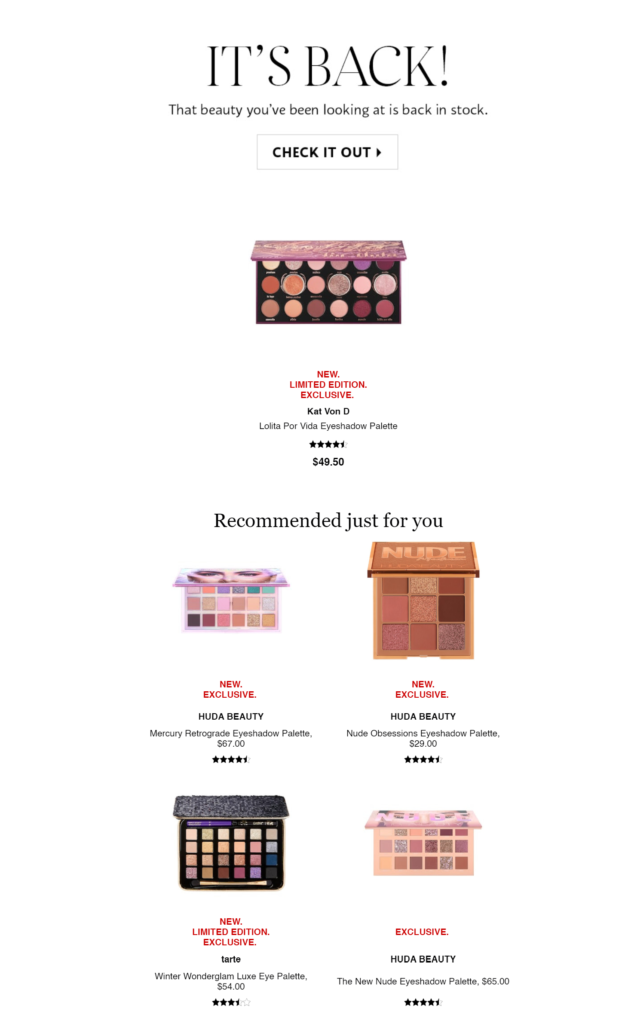
Sephora personalized these recommendations based on their subscriber’s preferences, encouraging them both to revisit the item they were interested in and add some more to their order while they’re checking out.
One thing that makes this email particularly smart is that Sephora pairs each item with its rating from other customers. Showing your prospects what other people think of your products is a form of social proof, and you can do it too by adding reviews or customer testimonials alongside your recommendations.
9. The Re-Engagement Email
It’s a sad truth in the e-commerce world that customers don’t always stay loyal forever. It may be that they lose interest in your products or, worse, move on to a competitor.
But that’s not the end of the story. There are still ways that you can coax them back into the fold, as long as you say the right words and offer the right things.
Brooklinen attempts to do just that with their win-back email. The first portion of the email gives you a list of three reasons why, as a former customer, you should return to their site.
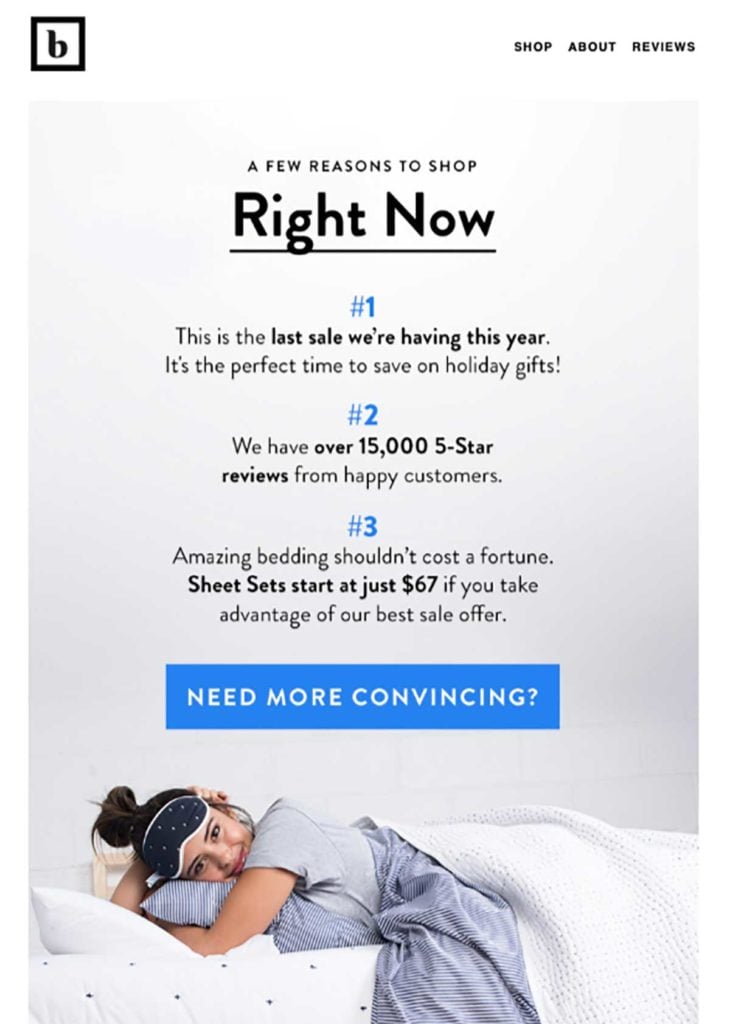
They then go on to offer you a gift with your order, and, if that wasn’t enough, add some product recommendations to the mix.
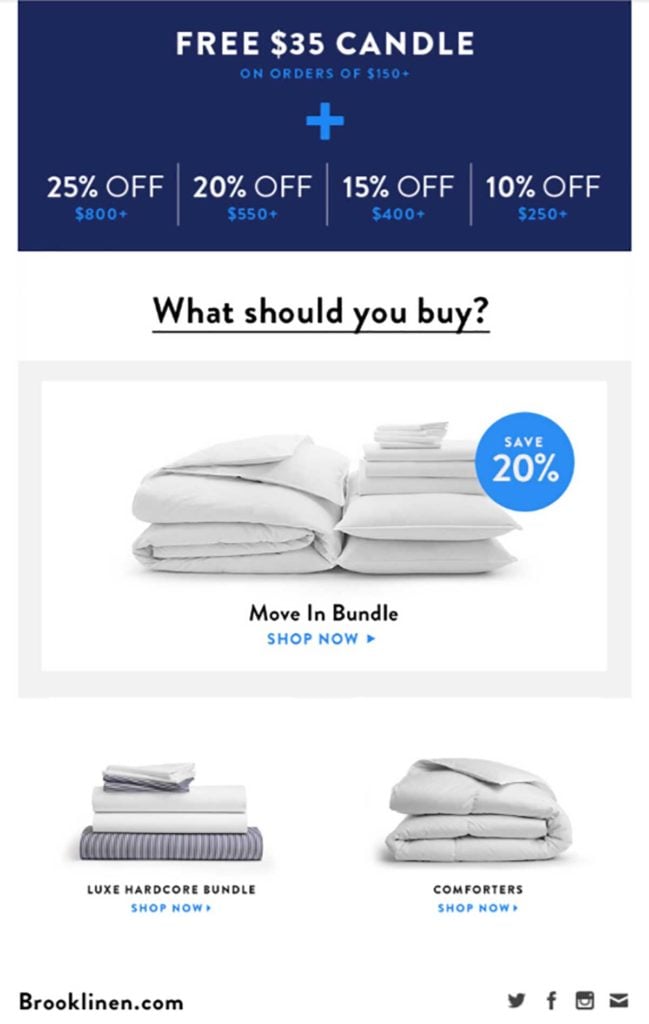
Combining the incentive of a gift with the recommendations provides a roadmap to customers to revisit Brooklinen’s site and make a purchase, thereby reducing their customer churn rate.

Conclusion
Product recommendations are about giving people a clear and convenient path from prospect to buyer. I hope that these examples have provided you with some inspiration to help you do just that, without coming off as too promotional or irrelevant.
You can experiment with the types of recommendations you offer, where you place them, even the copy you pair them with, and see for yourself the most effective ways to engage your customers and increase your revenue.

